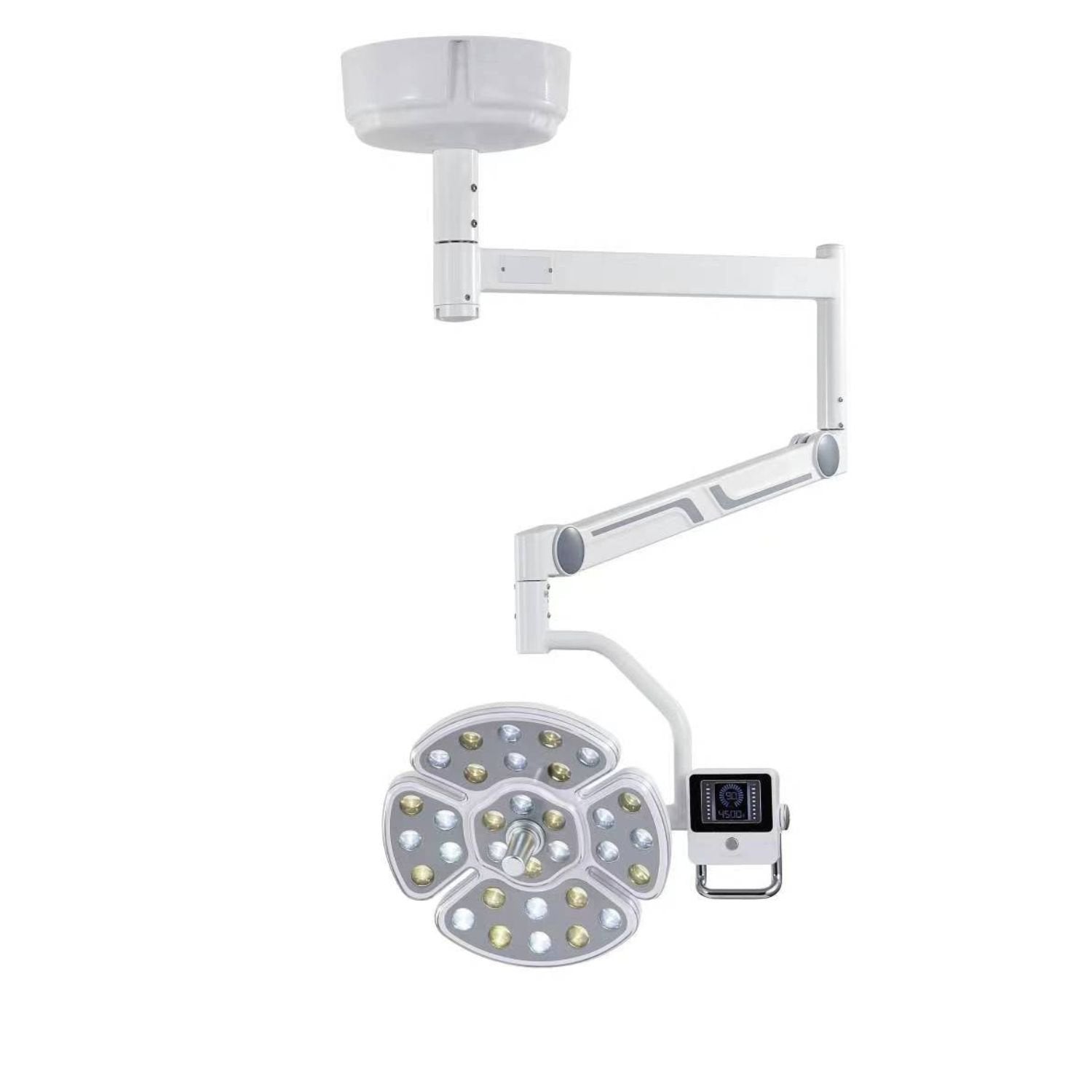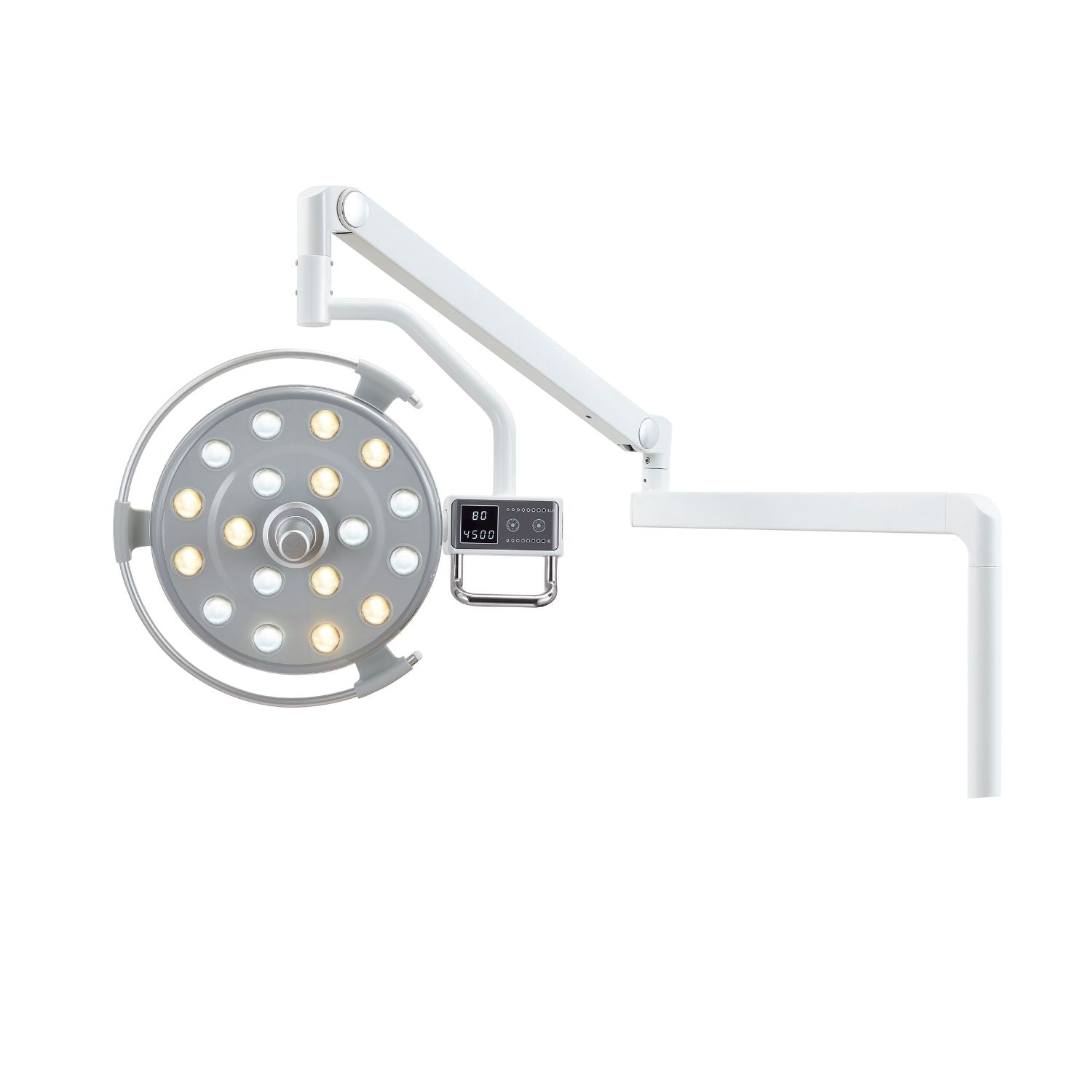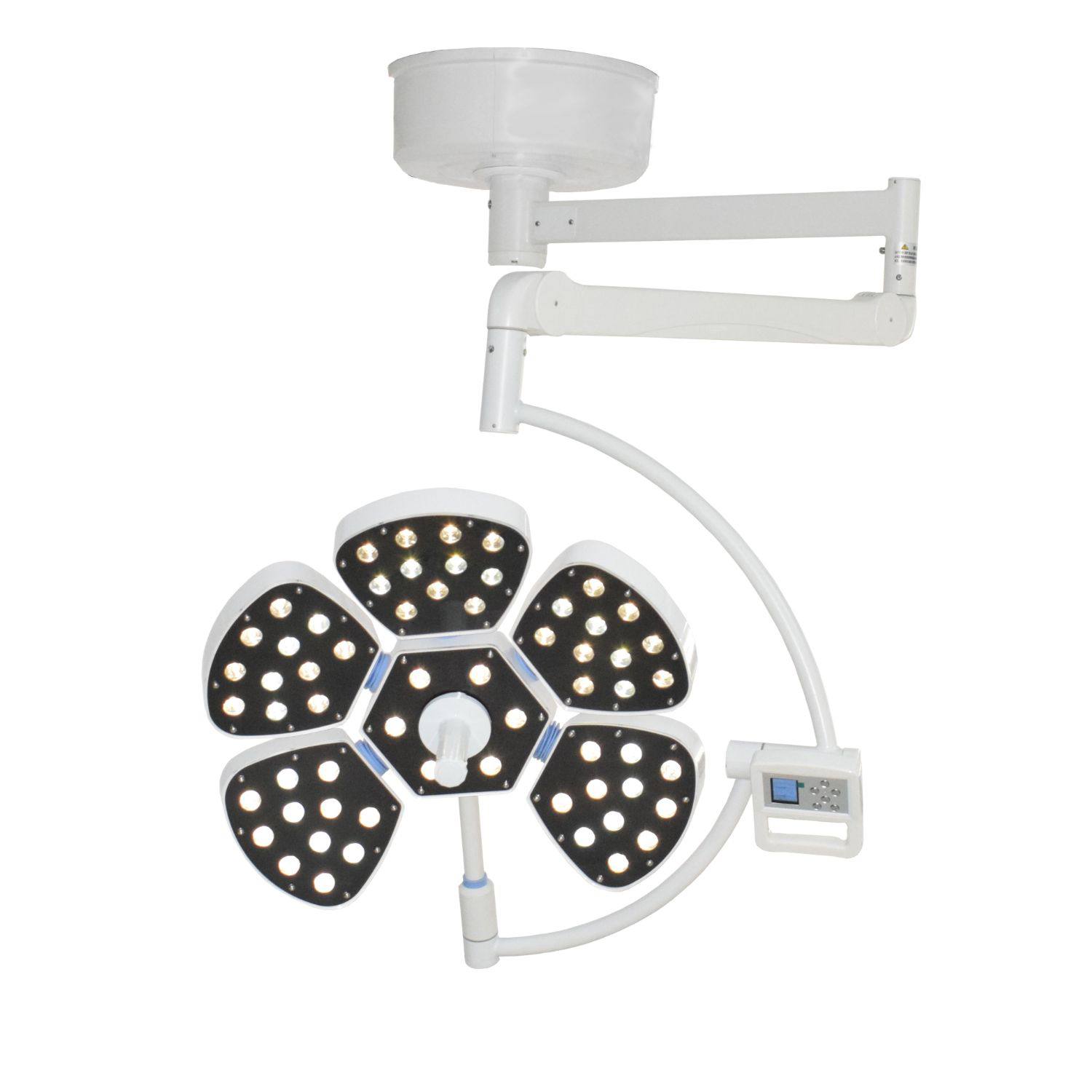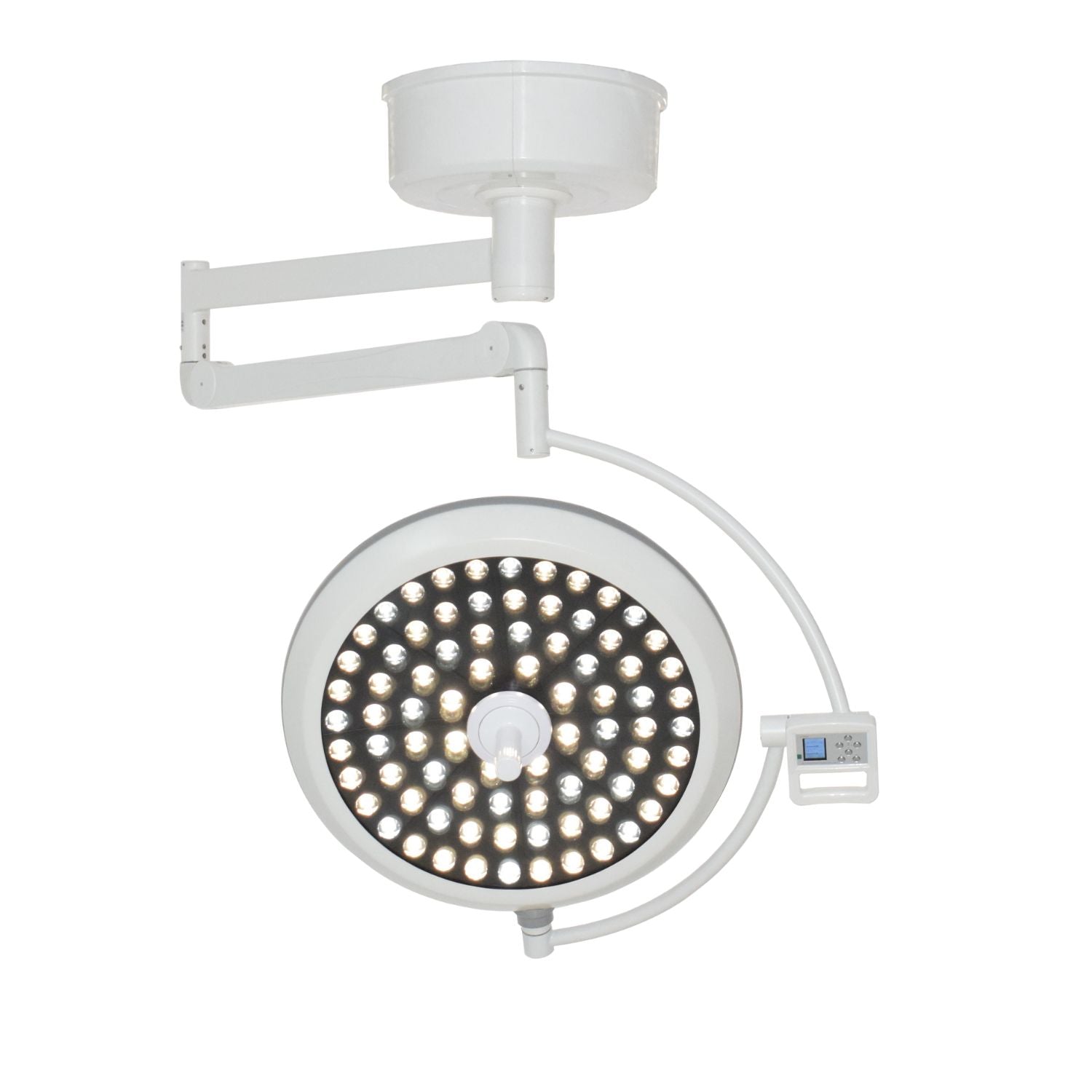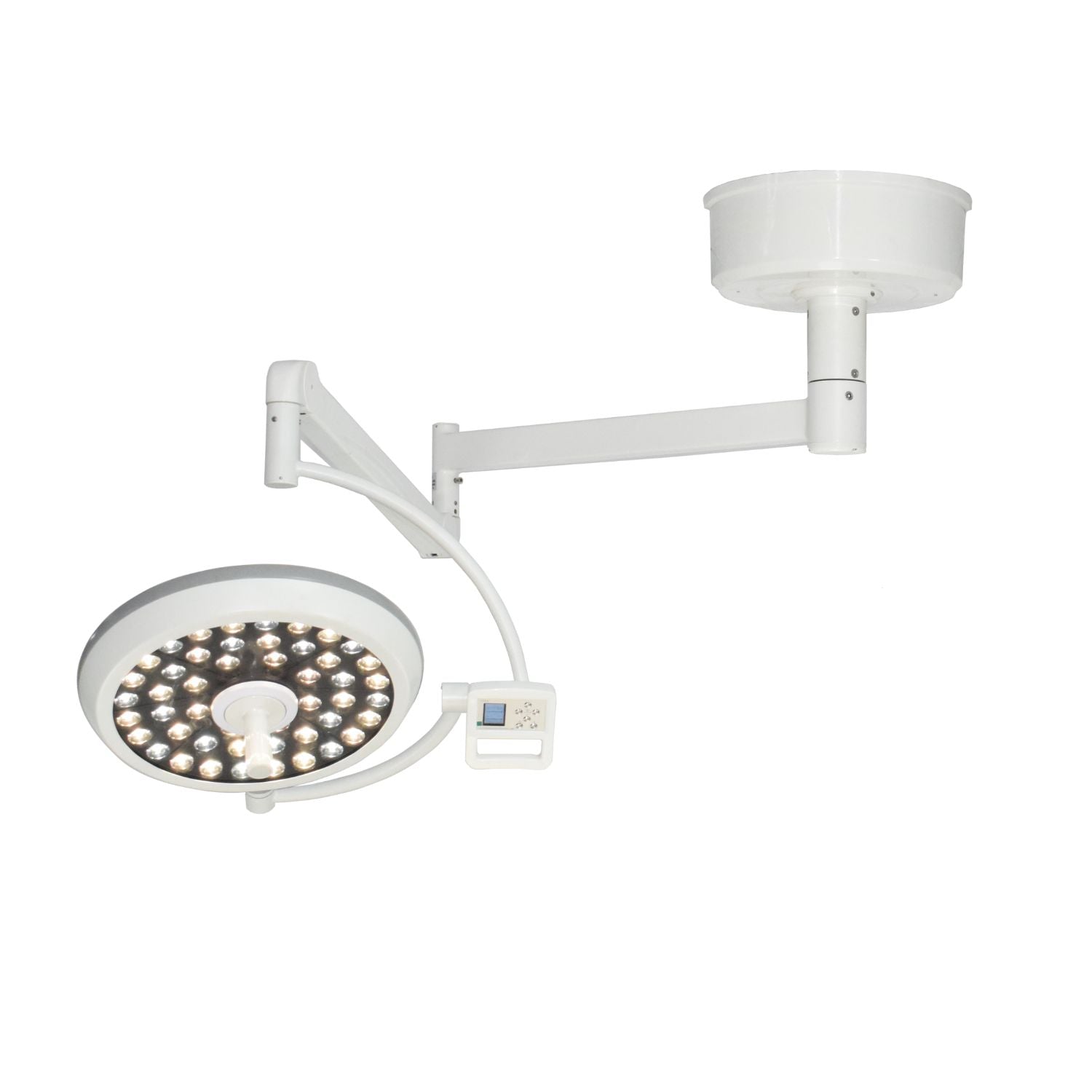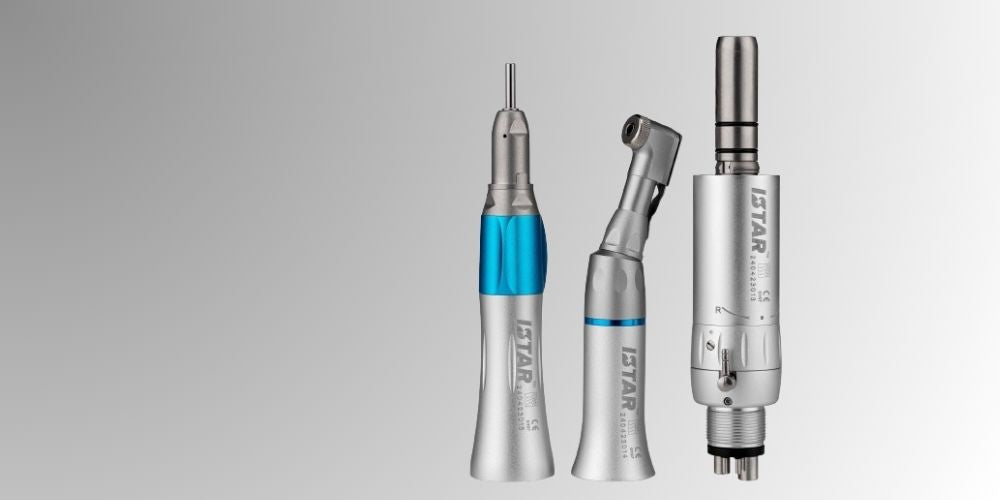
Istar Dental Supply
Istar offers high-quality and affordable ceiling mounted surgical lights, providing you with optimal surgical lighting and improving overall medical outcomes.
Key Features

Superior Illumination and Visibility
A good quality ceiling mounted surgical light provides bright, consistent, and shadow-free illumination with high lux levels and optimal color temperature.
This ensures excellent visibility of surgical sites, which is crucial for precision and accuracy during procedures.

Adjustability and Ergonomics
A high-quality overhead surgical lamp features multi-directional arms, flexible positioning, and adjustable intensity.
This allows for precise focus and adaptation to various surgical needs, enhancing ergonomic efficiency and reducing strain on surgeons and staff.

Durability and Reliability
A top-notch ceiling mounted dental light is constructed with high-quality materials and advanced technology, such as LED lighting, ensuring longevity, minimal maintenance, and consistent performance.
These lights are reliable under intensive use and adverse conditions.

Enhanced Sterility and Safety
A superior overhead dental light is designed with smooth, sealed surfaces that are easy to clean and sterilize, reducing the risk of contamination.
It incorporates safety features like touchless sensors and low heat emission to maintain a safe and sterile operating environment.
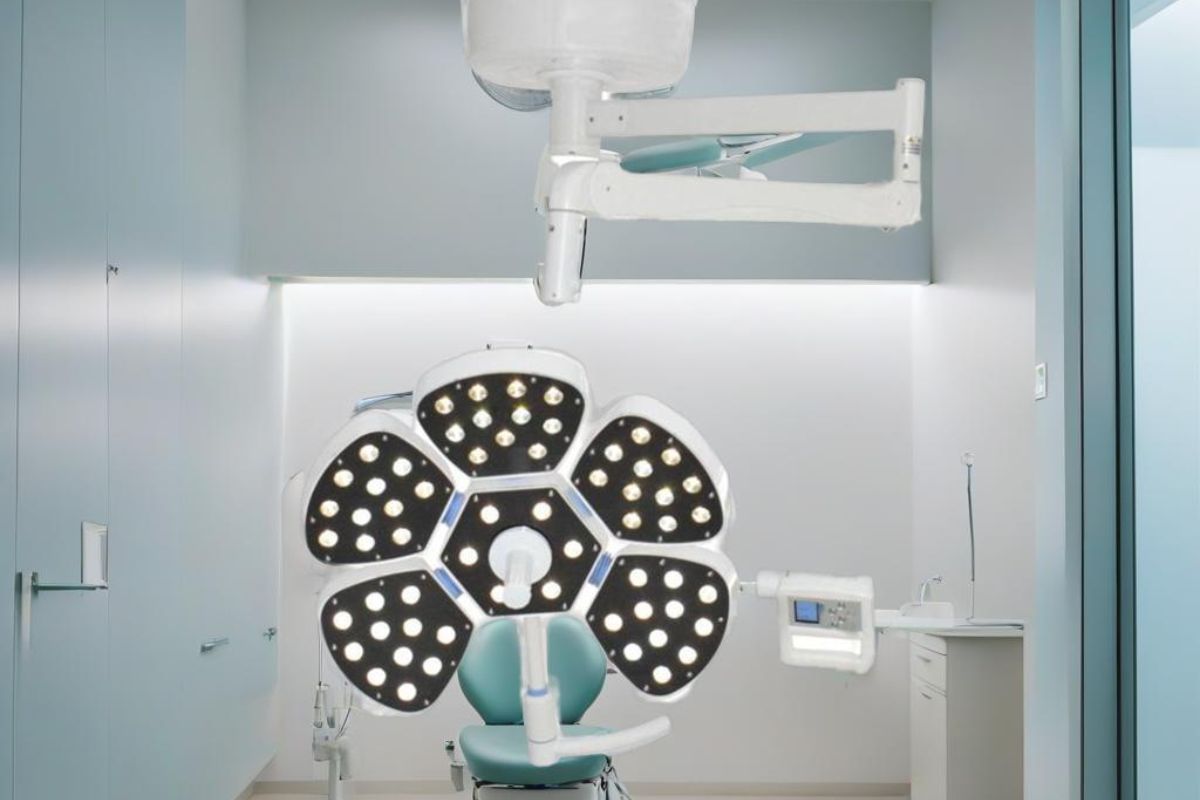
What is a Ceiling Mounted Surgical Light?
Ceiling Mounted Surgical Light, also known as an operating room light, surgical light, or surgical lamp, is a specialized lighting fixture designed to provide optimal illumination during surgical procedures.
These dental lights are typically mounted on the ceiling of an operating room and are engineered to eliminate shadows, provide consistent and bright lighting, and enhance the visibility of surgical sites.
Overhead dental light is crucial for ensuring precision, reducing the risk of errors, and improving overall surgical outcomes.
Ceiling Surgical Light Uses
Ceiling dental light is used in various medical settings, primarily for:
- Surgeries: Providing clear, shadow-free illumination to enhance visibility during complex surgical procedures.
- Examinations: Assisting in detailed medical examinations that require high-intensity lighting.
- Emergency Rooms: Offering bright and adjustable lighting for critical care and emergency interventions.
- Dental Procedures: Ensuring proper visibility for intricate dental work.
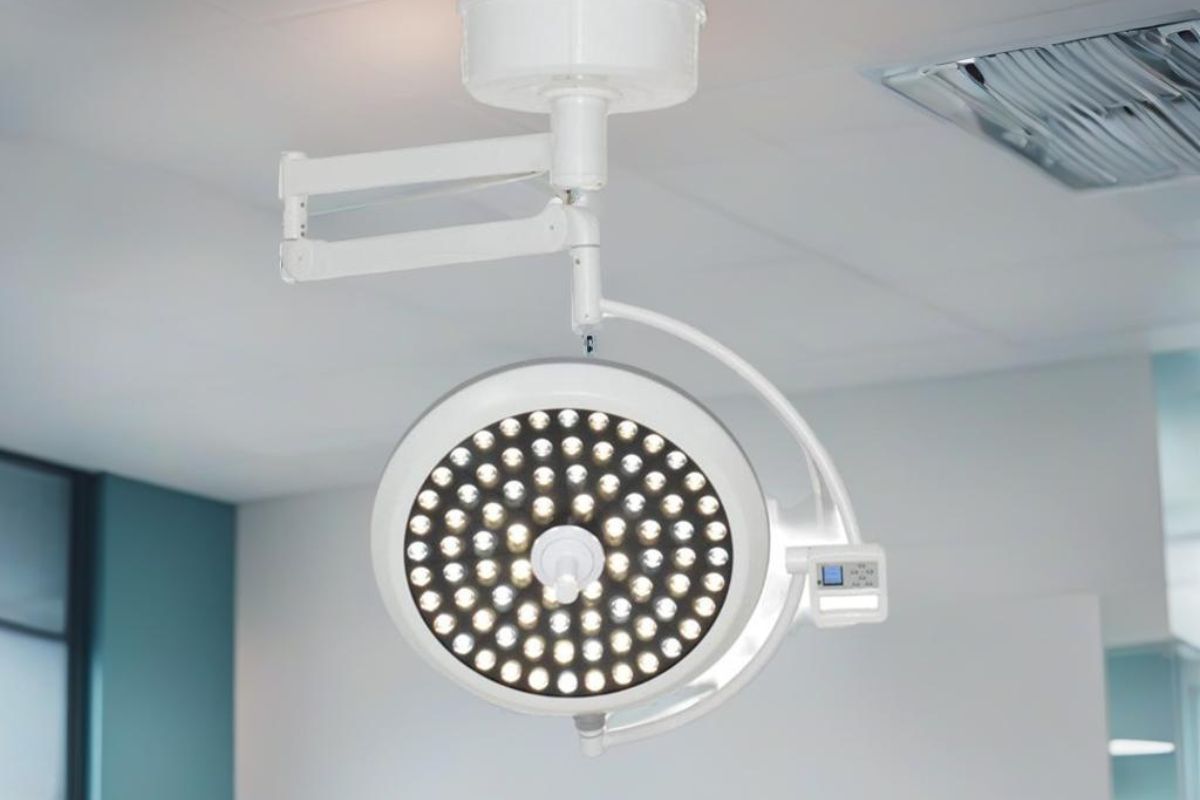
FAQ of Ceiling Mounted Surgical Light
Installing a ceiling mounted surgical light involves several steps:
- Site Preparation: Assessing the operating room to determine the best location for the surgical overhead light, ensuring it covers the surgical table adequately.
- Mounting Structure: Securing a robust mounting structure in the ceiling, often involving ceiling plates and support brackets to handle the weight of the overhead surgical light.
- Electrical Connections: Establishing electrical connections according to safety standards and ensuring proper voltage supply.
- Light Assembly: Assembling the light fixture and attaching it to the mounting structure.
- Testing and Calibration: Conducting thorough testing to ensure the light functions correctly, adjusting the intensity and positioning for optimal performance.
- Compliance Check: Ensuring installation meets all regulatory and safety standards.
Dental ceiling lights, a subtype of surgical ot light, have specific specifications:
- Illumination: Typically ranging from 20,000 to 100,000 lux.
- Color Temperature: Around 4,000 to 6,000 Kelvin for a neutral white light that enhances tissue differentiation.
- Adjustability: Multi-directional arms for precise positioning and focusing.
- Light Source: Often LED, providing energy efficiency, longevity, and low heat emission.
- Control Features: Touchless sensors, adjustable intensity, and dimming options.
- Sterility: Smooth, sealed surfaces that are easy to clean and sterilize.
Repairing operating room ceiling lights involves:
- Diagnosis: Identifying the issue, which could range from bulb or LED failure, electrical problems, mechanical wear, or control malfunctions.
- Replacement Parts: Procuring necessary replacement parts, such as bulbs, LED modules, arms, or control panels.
- Technical Expertise: Engaging trained technicians to perform repairs, ensuring adherence to safety standards and proper reassembly.
- Calibration: After repairs, recalibrating the light to ensure proper intensity and focus.
- Preventive Maintenance: Implementing regular maintenance checks to prevent future issues, including cleaning, lubrication of mechanical parts, and electrical inspections.
Operating room ceiling lights offer several advantages:
- Superior Illumination: Provides bright, consistent lighting, reducing shadows and enhancing visibility of surgical sites.
- Adjustability: Allows for precise positioning and focus adjustments, catering to the needs of various procedures.
- Improved Ergonomics: Frees up floor space and reduces clutter, improving the operating room's ergonomic efficiency.
- Reduced Heat: Modern LED surgical lights emit minimal heat, maintaining a comfortable environment for both patients and surgical teams.
- Energy Efficiency: LED technology offers lower energy consumption and longer lifespan compared to traditional lighting.
- Enhanced Sterility: Designed for easy cleaning and sterilization, reducing the risk of contamination.
Any question?
If we still haven't answered your question, you can contact us below and we will get back to you as soon as possible.


